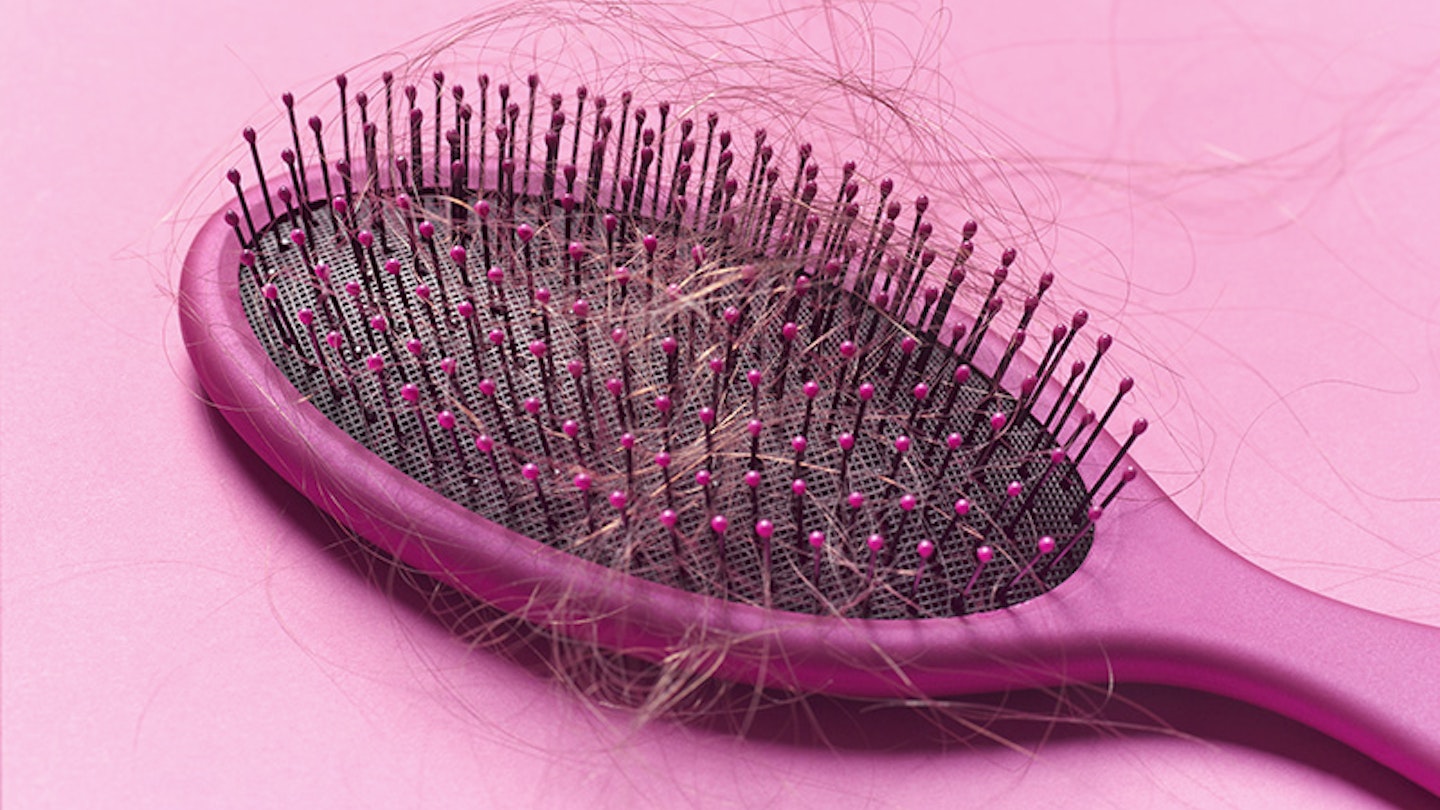Even if you have one of the best hair brushes, knowing how to clean a hairbrush is vital for maintaining healthy hair.
You may not have thought about it before, but your hairbrush gets dirty pretty quickly. When you brush your hair the brush can soak up the oil, dirt, dust, and excess product. When you use an unclean hairbrush or comb, all that dirt, oil, and gunk can get rubbed back into your hair. This can be worse with hair brushes for thick hair too.
Not cleaning your hairbrush can lead to germs and bacteria being passed onto your hair and scalp, and this can leave your hair looking not only greasy but also limp and lifeless. Hair stuck in the bristles can also damage the hair on the scalp, by pulling out more clumps and causing hair thinning, (you then have to get a whole different brush for thin hair to help prevent more damage).
To keep your hair and your hairbrush at their best, cleaning your brush regularly is essential.
We've spoken to one of the UK’s most recognised and respected Consultant Trichologists Eva Proudman, to find out the right way to clean a hairbrush and how often you should be doing it. Here's her expert advice:
Why should I clean my hairbrush?
"You may find a build-up in your hairbrush due to the fact that the hair and scalp attract, dust, debris and dead skin cells which, when you brush your hair, come away and are deposited into the brush. Our hair contains natural oils called sebum that also deposit onto the brush making it sticky so that debris can build up very easily. Styling products may may also come away onto the brush, adding further to the build-up of ‘fuzz’".
How often should you clean your hairbrush?
"Ideally, every time you use your brush! Be sure to pull out any hairs that have come out onto the bristles and generally, just take care to keep it clean and free from debris. Once a week, give your hairbrushes a wash using a small amount of your shampoo to remove any build up, oils or hair product."
How to clean a hairbrush
1 - With your fingers and then with a comb, remove all of the hair from the brush.
2 - Wet the brush in warm water and massage some shampoo through it to wash away any build up.
3 - Allow to sit in water for at least an hour. You'll see the water change colour as all the grease and grime comes out of the brush.
4 - Rinse with water and leave to air dry. You can also use this cleaning method for combs and hair clips – although avoid soaking a brush with a wooden handle as this could damage it, instead fill a bowl with warm water and gently swirl the brush head in the water. Add a few drops of shampoo to the brush head and carefully agitate with your fingers.

How do you clean a boar bristle brush?
"Firstly remove any loose hair or debris from the brush, a wide tooth comb can be helpful with this. Use lukewarm water with a little shampoo in it, if the water is too hot it can damage the bristles, swirl the brush in the water avoiding getting the handle wet if it is made of wood. Rinse the brush in clean lukewarm water and shake to remove excess water, pat dry with a clean towel and leave to air dry completely."
How often should you replace your hairbrush?
"It really does vary according to the type of brush but in general, as soon as you notice any loss of bristles or breakage you should replace the brush. There’s no point in putting off the purchase – it just won’t ‘perform’ as well for you and, in my opinion, your hair deserves better!”
A general rule of thumb is about every six months. Make sure you're using the right hairbrush for your hair type so they last better.
How should you clean a hairbrush after head lice?
"Remove hair before cleaning. Using hot water at least 55 degrees centigrade submerge the brush and soak for at least 5 -10 minutes. Use a lice killing shampoo such as Lyclear as directed on the label. Rinse and leave to dry. If your brush is made of material that cannot be cleaned with hot water I would advise replacing it."
Tips for cleaning your hairbrush
• If you have long hair, scissors may make it easier to remove loose strands from your brush.
• You can use a toothbrush on combs and plastic clips to give them a good scrub, but avoid on bristled hairbrushes as it could damage them.
• A cotton swab can help get into any little grooves where grime can build up.
• Soaking in a solution of baking soda and water for an hour will also help remove grime.
• For an extra deep clean, use a sanitising spray after soaking – either make your own with 50/50 rubbing alcohol and water, or you can buy beauty tool cleansing sprays.
Eva Proudman has been working for over 20 years as a leading expert in hair and scalp health, becoming one of the UK’s most recognised and respected Consultant Trichologists, diagnosing and treating clients across her network of clinics for all types of conditions, including male and female hair loss. A Fellow of the Institute of Trichologists, Eva is a ‘go to’ source of expert comment for UK and international media. She also advises on research and clinical product development and is star of TV’s highly acclaimed “Hair Loss Clinic”.
Stephanie Anthony is the Deputy Digital Editor of Yours.co.uk. Having worked across a variety of topics, from travel and food to pharmaceuticals, she also has a particular interest in mental health and wellness. She has a house full of pets with two dogs and two cats.
